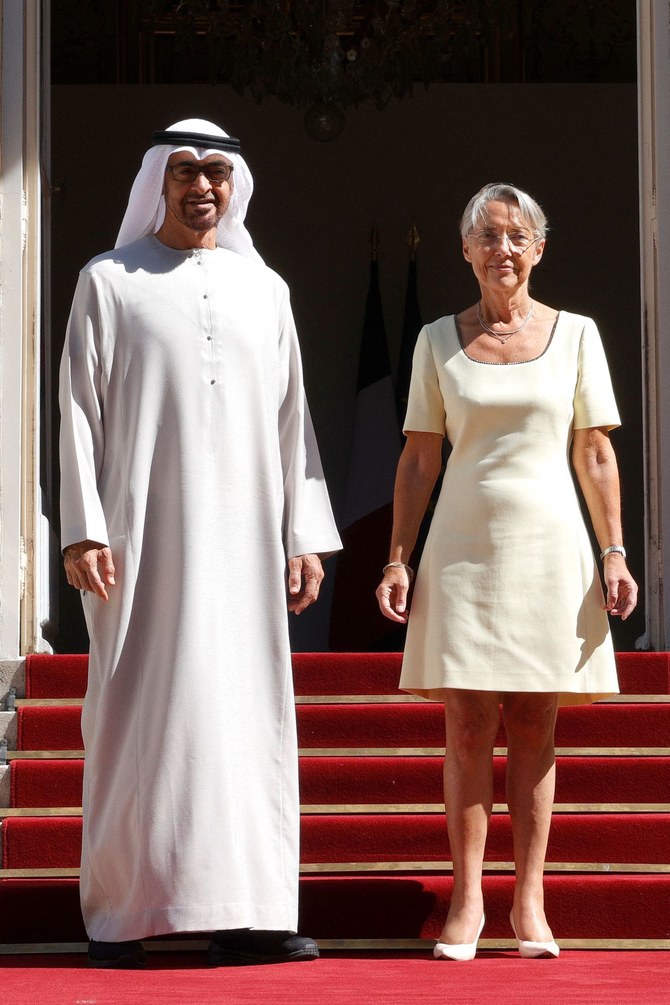DUBAI: The UAE’s president left France on Tuesday after meeting with the country’s prime minister Elisabeth Borne earlier in the day, Emirates News Agency reported.
Sheikh Mohamed bin Zayed Al-Nahyan was hosted by Borne at her official residence, Hotel Matignon, and the two officials discussed the longstanding relations between their countries.
They also explored opportunities to further strengthen these ties while addressing some of the most pressing issues facing the world today.
Sheikh Mohamed said the UAE was interested in collaborating with France on a broad range of topics including the economy, bilateral investment, the environment, climate change, food security, and sustainable technology.
The UAE’s president and France’s prime minister also agreed on the importance of pursuing peaceful coexistence and achieving greater stability for all.

UAE President Sheikh Mohamed bin Zayed Al-Nahyan is greeted by the French Prime Minister Elisabeth Borne, at Hotel de Matignon on July 19, 2022. (AFP)
A joint statement was issued by the UAE and France on the occasion of the visit.
The presidents of both countries expressed deep concern regarding the war in Ukraine, its terrible impact on civilians, the humanitarian situation, and its effects on commodity markets worldwide.
They underscored the urgent need to intensify diplomatic efforts to reach a solution to the conflict, and Sheikh Mohamed commended President Macron’s continuing efforts in that regard.
The leaders also discussed a range of regional and global opportunities and challenges, and agreed to work together to find ways to mitigate the impact of these challenges.
They agreed to establish a France-UAE Comprehensive Strategic Energy Partnership, a major step in fostering energy security and affordability. They also welcomed the agreement between TotalEnergies and ADNOC on fuel provision, with the aim of increasing the security of fuel supply in France.
“Collaboration across energy of all kinds is critical, and the UAE is committed to supporting energy security to all people, especially France,” Sheikh Mohammed said on Monday.
The UAE also emphasised its support for global action on food security, and said it would work with France to find ways to mitigate ongoing pressure on global supply chains.


























